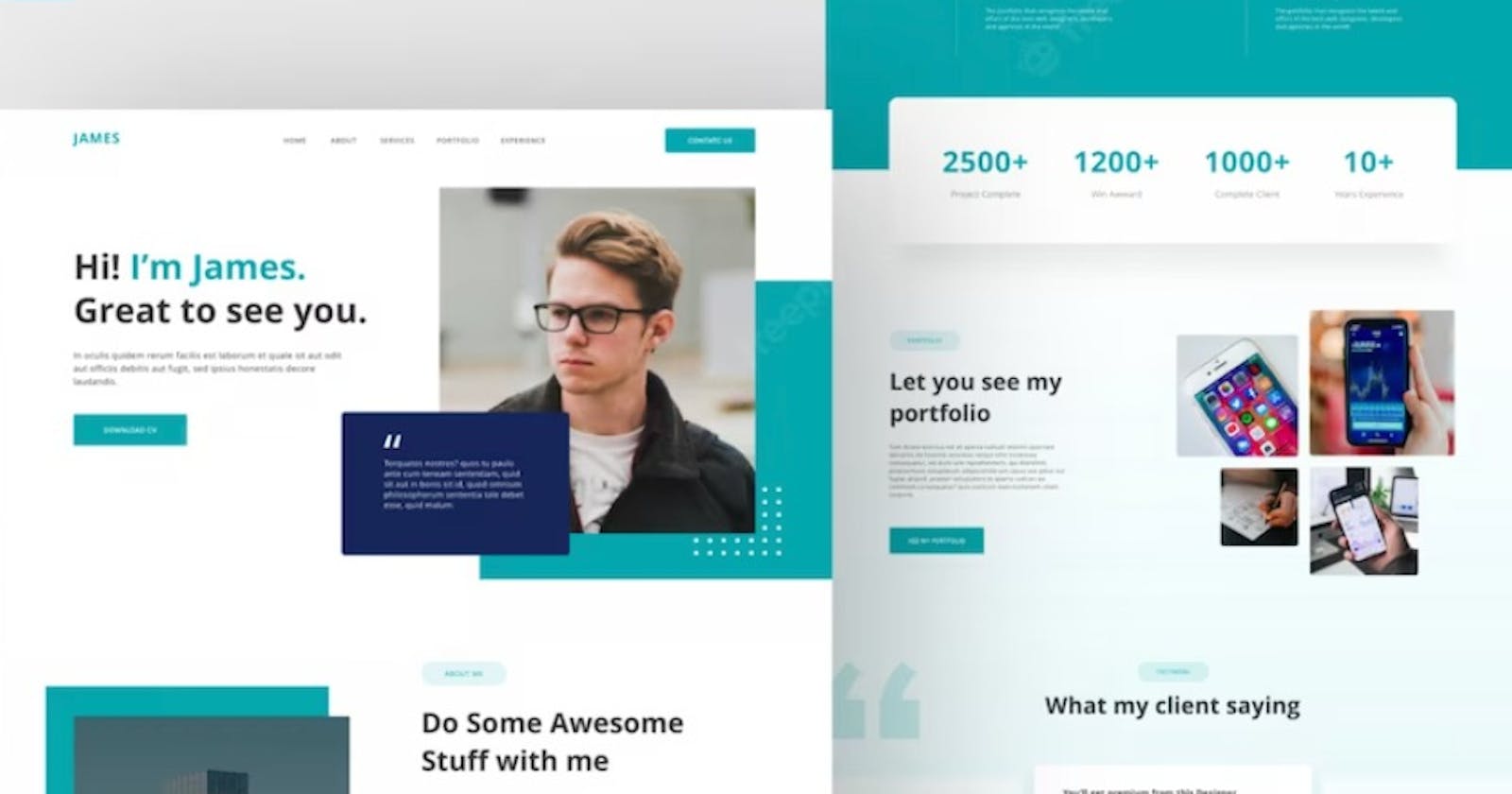Crafting a memorable Developer portfolio: An in-depth guide to stand out in the digital crowd
Table of contents
- Introduction:
- 1. The Blueprint of Purpose:
- 2. Platform - The Foundation:
- 3. Personal Branding - Your Digital Signature:
- 4. The Hall of Fame - Showcasing Projects:
- 5. Thought Leadership Through Blogging:
- 6. Voice of Trust - Testimonials:
- 7. Seamless Experience - Mobile Responsiveness:
- 8. Speed - The Unsung Hero:
- 9. A Friendly Nudge - Call to Action (CTA):
- 10. Keep the Digital Garden Flourishing:
- Conclusion:
Introduction:
In today's fast-paced digital realm, a developer's portfolio transcends being a mere compilation of work; it's a digital narrative of your journey, passion, and prowess. For potential employers, clients, or collaborators, it's like a window into your mind. This guide aims not just to help you create a portfolio but to craft a captivating story that echoes your passion and expertise in development.

1. The Blueprint of Purpose:
Before even writing a line of code or selecting a template:
Audience Assessment: Recognize and define who will be viewing your portfolio. Is it future employers, freelance clients, or a community of developers?
Objective Outlining: Understand and crystallize what you aim to achieve. Are you showcasing versatility, niche expertise, or a blend of your personality with your coding skills?
2. Platform - The Foundation:
Creating your portfolio from scratch is a fantastic testament to your skills. However, platforms like WordPress, Jekyll, Wix, and Squarespace offer the advantage of tested user experience, optimized performance, and sleek aesthetics.

3. Personal Branding - Your Digital Signature:
The Digital Handshake: A crisp photo where you're looking approachable yet professional. This creates a subconscious connection.
Bio - The Elevator Pitch: A short, engaging bio that captures your journey, passion, and aspirations.
The Professional Trail: Your updated CV or resume.
Digital Touchpoints: Clearly visible (but not obtrusive) links to LinkedIn, GitHub, or Twitter.
4. The Hall of Fame - Showcasing Projects:
Spotlight Projects: Instead of listing every project, curate a list of 4-6 of your most impactful works.
Visual Engagement: Use dynamic images, GIFs, or even short videos.
Story Behind the Code: Narrate what prompted the project, the problems you solved, and your journey from conceptualization to execution.
Tech Stack Tags: Quickly list the tools and technologies employed.
Hands-on Experience: Direct visitors to the live project and its source code.

- Palette of Skills: Make sure these projects showcase a spectrum of your skills. If you're proficient in both frontend and backend, your projects should reflect that.
5. Thought Leadership Through Blogging:
While this section is optional, its benefits are manifold. Through blogs:
Showcase Your Expertise: Write tutorials, share solutions to unique problems, or review tools.
Engage the Community: Share opinions on recent tech trends or predictions. Engage in conversations with readers who comment.
6. Voice of Trust - Testimonials:
Nothing builds trust like word-of-mouth:
Include brief, authentic testimonials from clients, teammates, or supervisors.
Showcase the projects or roles associated with the testimonials.
7. Seamless Experience - Mobile Responsiveness:
Remember, many visitors might access your portfolio via mobile. Ensure a seamless transition between desktop and mobile versions, maintaining aesthetic integrity and functionality.

8. Speed - The Unsung Hero:
In the digital realm, patience is sparse:
Ensure images are optimized.
Minimize the use of heavy libraries or unnecessary plugins.
Consider CDNs like Cloudflare to improve load times globally.
9. A Friendly Nudge - Call to Action (CTA):
Whether it's a gentle nudge to drop you an email, a link to your latest project, or an invitation to collaborate on GitHub, CTAs guide your visitors on the next steps.

10. Keep the Digital Garden Flourishing:
A portfolio is like a garden; it needs regular tending. As you evolve, so should your portfolio. Regularly update it with new projects, milestones, or skills.

Conclusion:
Building a developer portfolio is akin to artistry in code form. It's a blend of technical prowess, storytelling, and personal branding. By investing time and passion, you're not just building a webpage; you're crafting an experience, making an impression, and most importantly, narrating your ever-evolving story as a developer. Dive in, start crafting, and let your portfolio be the beacon that guides opportunities to your digital shores.
Follow me on Twitter: @CodezMikazuki
Thanks for reading, Malcz/Mika
